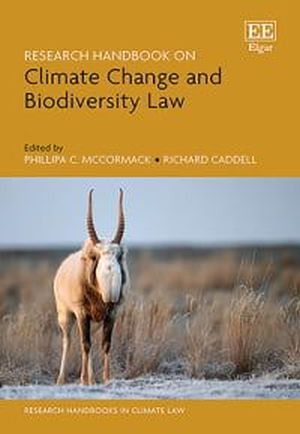
This Research Handbook tackles the intersecting crises of biodiversity loss and climate change from a legal perspective, delivering cutting edge insights into the evolution of these laws, and their shortfalls and opportunities. Experts critically analyse international and regional laws and institutions that were designed to protect biodiversity. They highlight the ways in which legal frameworks are being challenged by climate change and historical biodiversity loss, and the potential for these laws to transition or be transformed in anticipation of ongoing change.
The contributing authors examine what biodiversity laws need to achieve as the climate continues to change, and outline innovations within conservation, climate mitigation and adaptation research and practice. They focus on emerging legal gaps, and explore civil litigation rules and industry arrangements such as international fishing regulations and invasive species management. They examine core international and transboundary environmental law regimes, as well as multilateral environment agreements, and review how domestic legal instruments contribute to implementing international rules and targets. The chapters in this Research Handbook cover a broad range of sectors, disciplines and jurisdictions, including NGO, government and industry-led approaches, providing insights into the potential of legal strategies to address threats posed by climate-driven biodiversity loss.
The Research Handbook on Climate Change and Biodiversity Law is invaluable to students and academics in climate change and environmental law, conveying a clear understanding of how multiple legal regimes interact and instigate legal, political and governance reform. Policymakers, lawmakers and litigators seeking to enforce international and domestic laws will also find it a key resource.